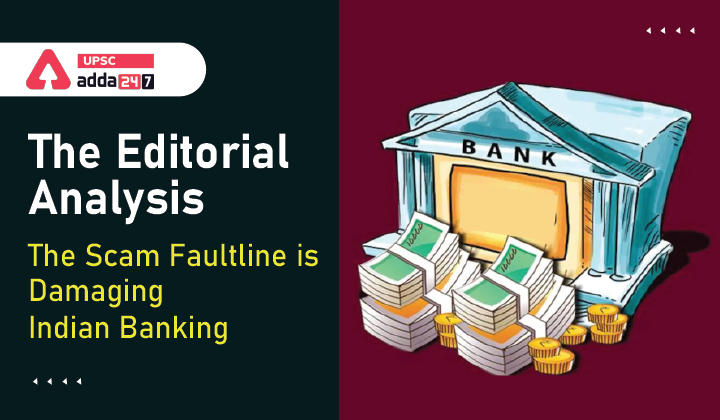Table of Contents
Scam in India 2022: Relevance
- GS 3: Indian Economy and issues relating to planning, mobilization, of resources, growth, development and employment.
Banking scam in India: Context
- Recently, the DHFL scam—the biggest banking scam in India has come to the forefront in the midst of celebrations of ‘Aazadi Ka Amrit Mahotsav’.
DHFL scam in India: Key points
- Dewan Housing Finance Corporation Limited (DHFL) has hoodwinked a consortium of banks driven by the Union Bank of India to the tune of ₹35,000 crore through financial misrepresentation.
DHFL scam: What has happened?
- A consortium of banks had held a meeting to take cognisance of the serious allegations of loan repayment default against the DHFL.
- Subsequently, a core committee of seven of the largest banks — the State Bank of India (SBI), the Bank of Baroda (BoB), the Bank of India, Canara Bank, the Central Bank of India, Syndicate Bank and the Union Bank of India (UBI) — was formed.
- KPMG, a global auditing company was roped in as the evaluator to lead a unique survey review of the DHFL for the period April 1, 2015-March 31, 2019.
- The Central Bureau of Investigation (CBI), in its first information report, has shown that the State Bank of India was the most badly hit with a non-performing asset (NPA) base of ₹9,898 crore the very sum the DHFL acquired from it.
Significance of the scam
- The banking system of any country is the backbone of its economy. Excessive losses to banks affect every person in the country because the amounts deposited in banks belong to the citizens of the country.
Reasons of the scam
- RBI data show that around 34% of scams in the banking industry are on account of inside work and due to poor lending practices by and the involvement of the junior and mid-level management.
- The data also show that one of the fundamental problems in the way of the development of banking in India is on account of rising bank scams and the costs consequently forced on the framework.
- Frauds in the banking industry can be grouped under four classifications: ‘Management’, ‘Outsider’, ‘Insider’ and ‘Insider and Outsider’ (jointly).
- All scams, whether interior or outside, are results of operational failures.
NPA in India
- In Financial Stability Report RBI said that there is a projection of the gross NPAs of banks rising from 6.9% in September 2021 to 8.1% of total assets by September 2022 (under a baseline scenario) and to 9.5% under a severe stress scenario.
- Research by Deloitte has shown that limited asset monitoring after disbursement (38%) was the foremost reason behind stressed assets and insufficient due diligence before disbursement (21%) was among the major factors for these NPAs.
- A high NPA also reduces the net interest margin of banks besides increasing their operating cost; these banks meet this cost by increasing the convenience fee from their small customers on a day-to-day basis.
Scams in India: Steps needed
- Banks have to exercise due diligence and caution while offering funds as bad loans lead to high NPAs.
- The regulation and the control of chartered accountants is a very important step to reduce non-performing assets of banks.
- Banks should be cautious while lending to Indian companies that have taken huge loans abroad.
- There is also an urgent need to tighten the internal and external audit systems of banks.
- The fast rotation of employees of a bank’s loan department also needs to be considered.
- Public sector banks should set up an internal rating agency for rigorous evaluation of large projects before sanctioning loans.
- Further, there is a need to implement an effective Management Information System (MIS) to monitor early warning signals about business projects.
- The CIBIL score of the borrower should be evaluated by the bank concerned and RBI officials. This must also include the classification and responsibilities of the lending and recovery departments.
- Financial fraud can be reduced to a great extent by the use of artificial intelligence (AI) to monitor financial transactions.
- Rather than having to continuously write off the bad loans of large corporates, India has to improve its loan recovery processes and establish an early warning system in the post-disbursement phase.
- Banks need to carry out fraud risk assessments every quarter.
Read current affairs for UPSC





 TSPSC Group 1 Question Paper 2024, Downl...
TSPSC Group 1 Question Paper 2024, Downl...
 TSPSC Group 1 Answer key 2024 Out, Downl...
TSPSC Group 1 Answer key 2024 Out, Downl...
 UPSC Prelims 2024 Question Paper, Downlo...
UPSC Prelims 2024 Question Paper, Downlo...
